SRS A disease that eats away the Chilean salmon
By Christian Perez Mallea christian@fishfarmingxpert.com
Outbreaks of Infectious Salmon Anemia (ISAv) have a high media impact. Appearing in the press it sets off alarms, raises awareness among the population and mobilizes public and private efforts towards the mitigation of its effects.
In contrast, the impact of Piscirickettsiosis (SRS) on Chilean salmon farms and particularly on Rainbow trout and Atlantic salmon, seem to go far more unnoticed even though this is by far the most commonly diagnosed disease in Chilean fish in recent years. Furthermore, while the incidence of other diseases has declined, this one has maintained a notorious upward trend.
Several years ago, it was estimated that SRS meant losses for the Chilean salmon industry of around US$ 100 million per year. It would not be naïve to estimate that the higher mortality rates seen in recent months as a result of this disease, together with the lower quality fillets observed in processing plants, and the consequent degradation and disposal of fish, represent a greater amount to the figure mentioned above.
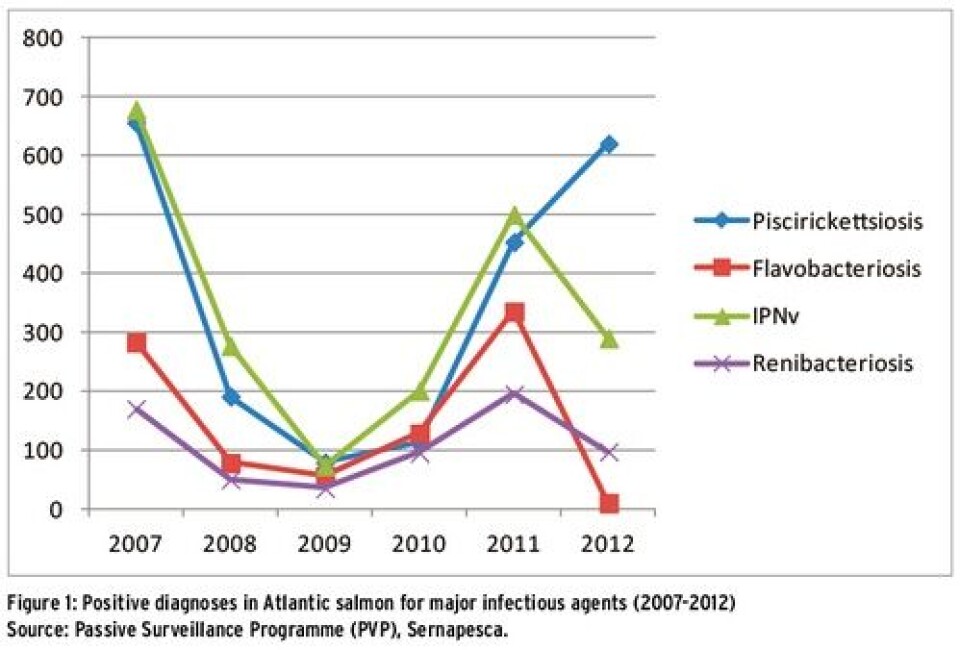
The most common disease Looking at the figures of the Passive Surveillance Programme managed by the National Fisheries and Aquaculture Service, Sernapesca, it can be seen that over the past six years, SRS has consistently been the disease with the highest number of positive diagnoses in the three main species of farmed salmonids in Chile (see figures 1, 2 and 3).
Likewise, according to these figures, provided by authorized diagnostic laboratories, SRS is the only disease that experienced an increase in the number of positive diagnoses between the years 2011 and 2012.
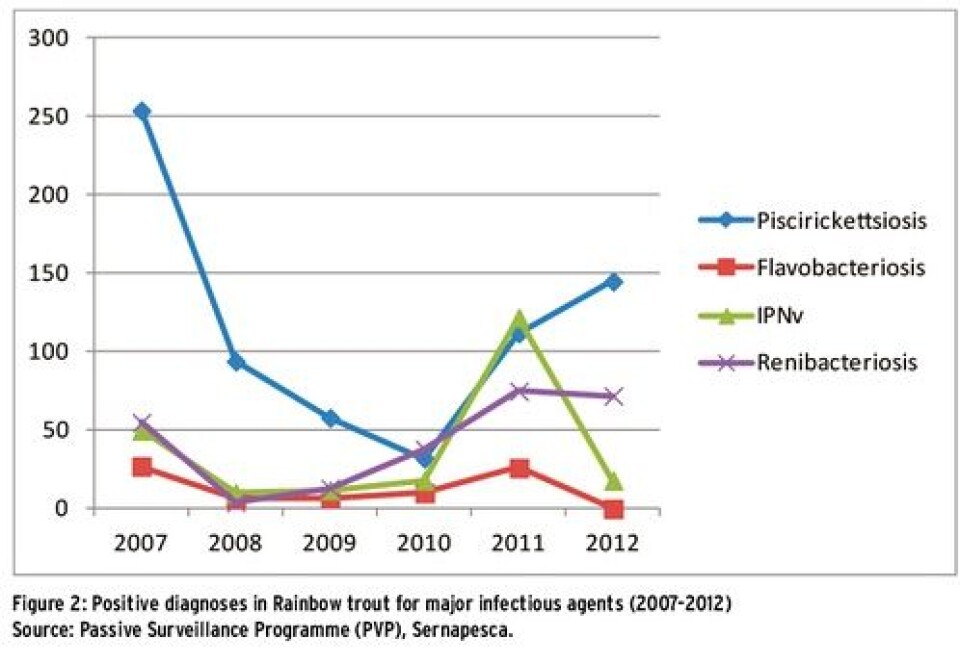
Moreover, upon comparing the number of positive diagnoses of the four most common diseases in the Chilean salmon industry, SRS is the only one that recorded similar values in 2012 to those observed in 2007, a date which marked the beginning of the worst sanitary crisis faced by this sector.
Additionally, SRS was responsible for more than half of the positive diagnoses reported to Sernapesca last year.
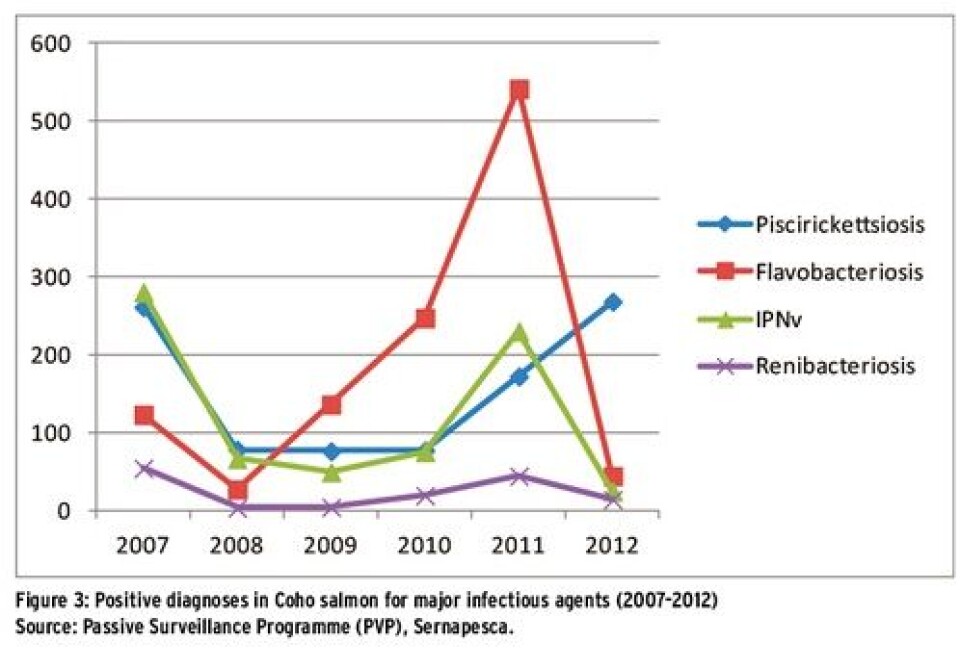
The main reason for antibiotics usage Together with being the most commonly diagnosed disease, Piscirickettsiosis consumes 82% of all the antimicrobials used by the local salmon industry, maintaining the trend shown in previous years (see Figure 4).
That is to say, if last year the Chilean salmon industry used 337.99 tonnes of antibiotics in the production of fish according to figures from Sernapesca, over 270 of those tonnes were destined for SRS control.
In relation to the drug of choice used in the fight against SRS, the largest share corresponds to florfenicol and oxytetracycline, and to a much lesser extent to flumequine.
In this regard, it should be noted that the sector spends around US$ 800,000 per year in antimicrobials for each percentage point of mortalities caused by this pathogen.
The major cause of mortalities and losses SRS was responsible for between 60 and 70% of the losses caused by infectious agents in Atlantic salmon and Coho salmon last year (see Figures 5 and 6).
In Rainbow trout, the situation is even more evident. Almost 95% of all secondary mortalities in this species were caused by SRS, according to statistics from Sernapesca (see Figure 7).

Additionally, the average weight of fish affected by this disease needs to be taken into consideration, because it directly impacts on the economic value they represent.
For example, the average weight of Rainbow in Sites of Large Spread of SRS or CAD-SRS , falls mostly between 2 kg and 3 kg, while in the case of Atlantic salmon, most of the fish affected has an average weight between 3 and 5 kg.
In addition, losses caused by infectious diseases have increased from 20-25% to 40-45%. in the Chilean salmon industry over the past years, Meanwhile, in January and February this year, the mortality rate for SRS in the local industry is, in historical terms, only surpassed by the values recorded in March and December 2008, and in January 2009, the period marked by the worst production performance of this sector and in the middle of the sanitary crisis commonly associated with ISAv.
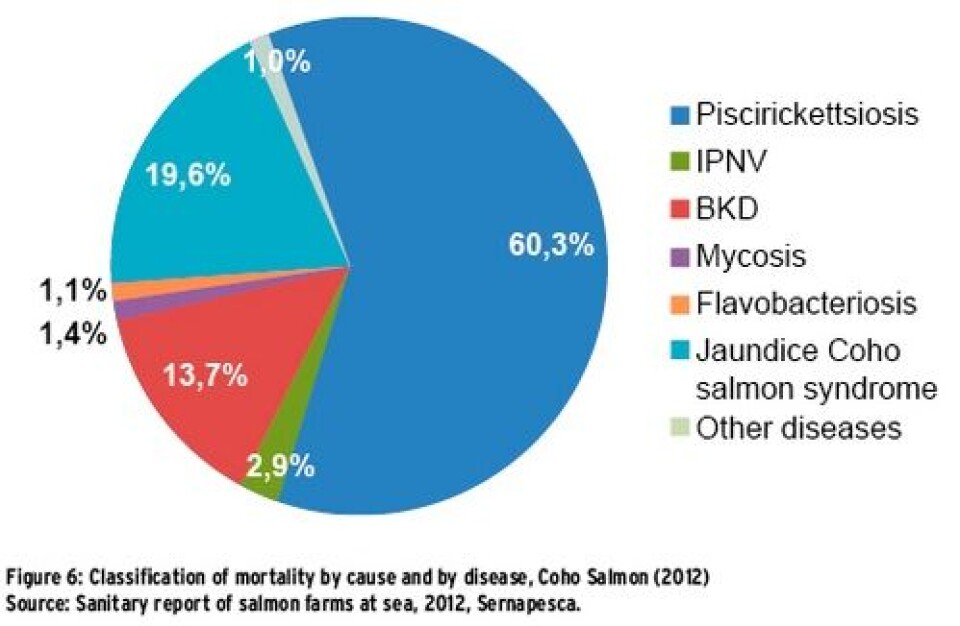
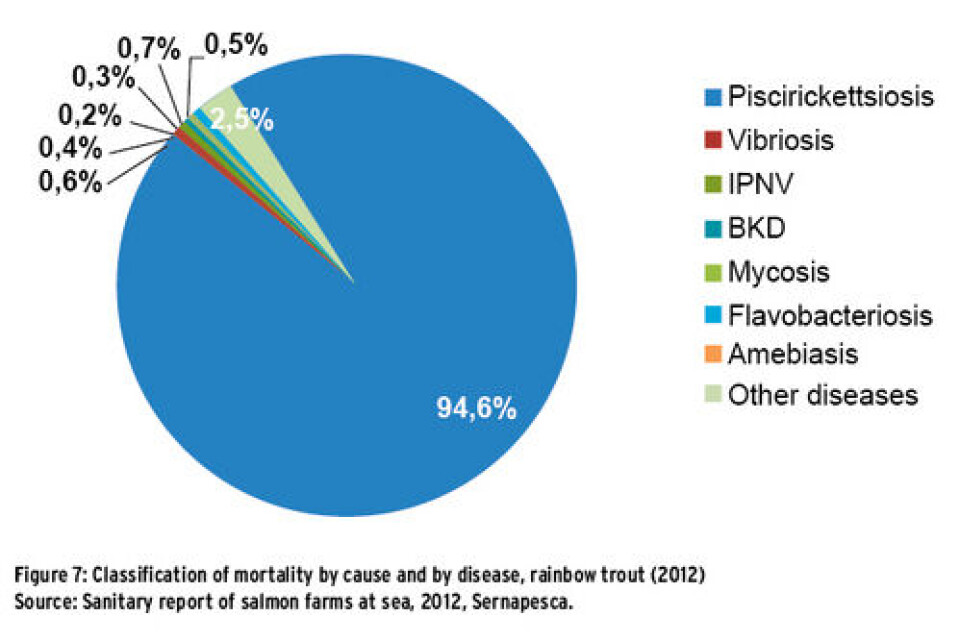
Finally, in geographical terms, the Aysén region is the one that has experienced the largest increase in the mortality rate due to SRS, in almost direct proportion to the rise seen in biomass of fish being farmed in that area. In turn, Rainbow trout is the species with the greatest losses among the three most farmed salmonid species in the country.
Major challenges According to several Chilean scientists, the biggest challenges in the control of this disease would be: investigate the concomitance between this pathogen and the presence of Renibacterium salmoninarum (causative agent of the Bacterial Kidney Disease), which allegedly has a synergistic effect; more effective vaccines that properly activate cellular immunity of fish and thereby address this facultative intracellular bacterium; and an improved control of sea lice, since SRS mainly enters into the fish through the skin and gills, while Caligus rogercresseyi excreted secretions contain trypsin and prostaglandin E2 among others, thereby contributing to reduce the host inflammatory response and facilitating the contagion of SRS.
All efforts demanded by these challenges seem justified in to the light of losses generated by this disease and the impact of antibiotic use, both on the environment and on public opinion and the image of the Chilean salmon industry.






















































